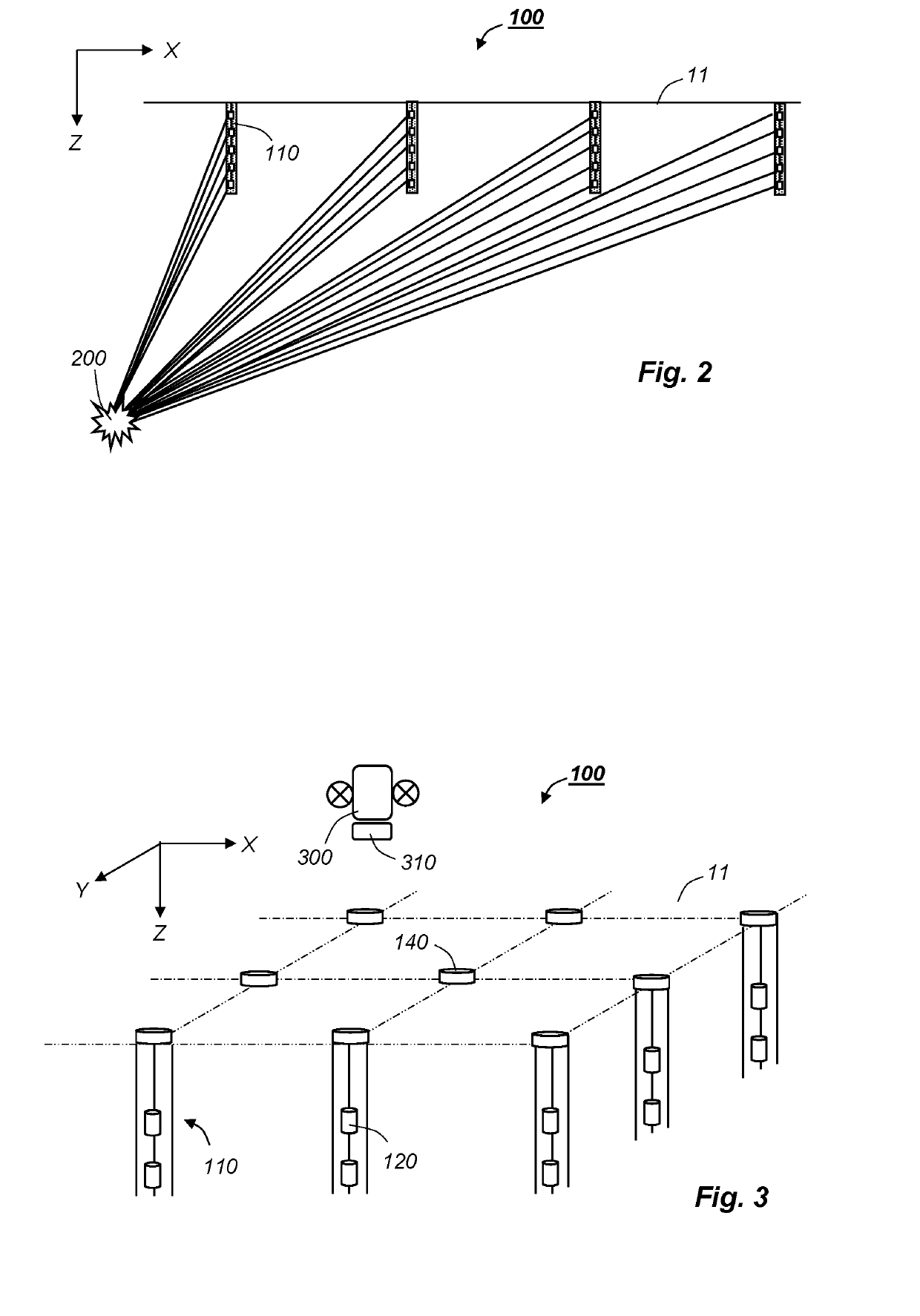Offshore reservoir monitoring system and method for its operation
a reservoir monitoring and monitoring system technology, applied in the field of active and/or passive seismic monitoring, can solve the problems of only being able to remove interface waves, contaminating seismic data acquired by most seabed sensors, and not being able to bury sensors away from interface waves, etc., to achieve the effect of saving storage space, less equipment, and shortening the tim
- Summary
- Abstract
- Description
- Claims
- Application Information
AI Technical Summary
Benefits of technology
Problems solved by technology
Method used
Image
Examples
Embodiment Construction
[0046]The drawings are schematic and not to scale. For ease of understanding, numerous details known to the skilled person are omitted from the drawings and following description.
[0047]The problem at hand may loosely be described as measuring a property u(x, t)=(u(t), v(t), w(t)) at discrete points (X, Y, Z, t) in space and time. A formal discussion of known representations of the seismic equations is beyond the scope of this disclosure. However, we note that the problem may be described as determining a boundary condition or final state, hereinafter a “wavefield” for short, sampled at discrete points (X, Y, Z, t) in space-time. Hence, the Nyquist-Shannon sampling theorem is central to ensure proper reconstruction of the full wavefield in spatial and temporal directions, and appears in some examples below.
[0048]The focal point mechanism describes the nature of a microseismic event, e.g. a dip slip, strike slip, dilation or a combination, and is typically derived from observation of ...
PUM
 Login to View More
Login to View More Abstract
Description
Claims
Application Information
 Login to View More
Login to View More - R&D
- Intellectual Property
- Life Sciences
- Materials
- Tech Scout
- Unparalleled Data Quality
- Higher Quality Content
- 60% Fewer Hallucinations
Browse by: Latest US Patents, China's latest patents, Technical Efficacy Thesaurus, Application Domain, Technology Topic, Popular Technical Reports.
© 2025 PatSnap. All rights reserved.Legal|Privacy policy|Modern Slavery Act Transparency Statement|Sitemap|About US| Contact US: help@patsnap.com



